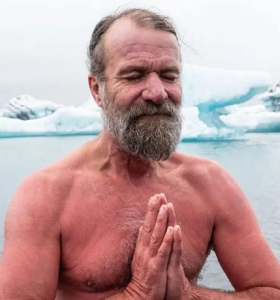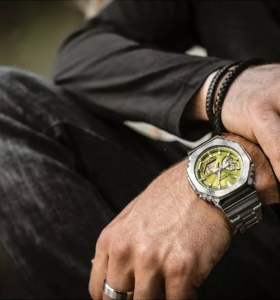Vivienne Westwood: Los hitos que marcaron a la gran dama de la moda británica
Vivienne Westwood: Los hitos que marcaron a la gran dama de la moda británica
Vivienne Westwood, sin lugar a dudas, es uno de los nombres más destacados en la historia de la moda británica y una de las diseñadoras más influyentes a nivel mundial. A lo largo de su carrera, Westwood ha dejado una huella imborrable con su estilo único, rebeldía y su incansable lucha por el respeto al medio ambiente. En este artículo, repasaremos los hitos más importantes que marcaron la carrera de esta gran dama de la moda.
Nacida el 8 de abril de 1941 en Derbyshire, Inglaterra, Vivienne Isabel Swire, ahora conocida como Vivienne Westwood, comenzó su carrera como maestra de escuela antes de adentrarse en el mundo de la moda. Fue en 1971 cuando abrió junto a su entonces esposo, Malcolm McLaren, su primera tienda en la famosa calle Kings Road de Londres, llamada “Let it Rock”. En esta tienda, Westwood comenzó a experimentar con la moda y a desarrollar su estilo único y provocativo.
Sin embargo, no fue hasta la década de 1970 cuando Westwood realmente se hizo un nombre en la industria de la moda. Su colaboración con McLaren, quien fue el manager de la banda punk Sex Pistols, la llevó a crear una de las mayores tendencias de la época: el movimiento punk. Westwood diseñó prendas que desafiaban los estándares establecidos y rompían con las normas de la moda convencional. Sus diseños, llenos de alfileres de seguridad, cuero y estampados llamativos, se convirtieron en un símbolo de la rebeldía juvenil y la contracultura.
A mediados de la década de 1980, Westwood se alejó del movimiento punk y se embarcó en una nueva etapa de su carrera. Fue en este momento cuando lanzó su primera colección en solitario y se convirtió en una de las figuras más importantes de la moda británica. Sus diseños, caracterizados por su aire teatral, su exuberancia y su combinación de elementos históricos y vanguardistas, conquistaron a críticos y amantes de la moda en todo el mundo.
Pero más allá de su talento como diseñadora, Vivienne Westwood también es conocida por su compromiso con el medio ambiente y su lucha contra el cambio climático. En 2011, fundó la organización Cool Earth, que se dedica a la protección de las selvas tropicales y la lucha contra la deforestación. Además, en sus últimas colecciones, Westwood ha utilizado su plataforma para concienciar sobre la importancia de la sostenibilidad en la industria de la moda.
Hoy en día, Vivienne Westwood continúa siendo una figura icónica en el mundo de la moda. Su estilo inconfundible y su activismo la han convertido en una inspiración para diseñadores y amantes de la moda de todo el mundo. Su legado perdurará en el tiempo como una prueba de que la moda puede ser mucho más que solo prendas bonitas, puede ser un medio para expresar rebeldía, creatividad y conciencia social.
En resumen, Vivienne Westwood ha sido y seguirá siendo una de las grandes damas de la moda británica. Su estilo único, su rebeldía y su compromiso con el medio ambiente la han convertido en una figura imprescindible en la industria de la moda. A través de sus hitos y logros, Westwood ha dejado una marca imborrable en la historia de la moda y ha demostrado que la creatividad y la conciencia social pueden y deben ir de la mano. Algunos de los hitos más destacados en la carrera de Vivienne Westwood incluyen:
1. Apertura de “Let it Rock”: En 1971, Westwood abrió su primera tienda en Londres junto a Malcolm McLaren. La tienda se llamaba “Let it Rock” y fue el punto de partida para desarrollar su estilo único y provocativo.
2. Movimiento punk: En la década de 1970, Westwood colaboró con McLaren y diseñó prendas que desafiaban los estándares de la moda convencional. Sus diseños punk, llenos de alfileres de seguridad, cuero y estampados llamativos, se convirtieron en símbolos de rebeldía y contracultura.
3. Lanzamiento de su primera colección en solitario: A mediados de la década de 1980, Westwood se alejó del movimiento punk y lanzó su primera colección en solitario. Sus diseños teatrales, exuberantes y con elementos históricos y vanguardistas le trajeron reconocimiento dentro de la industria de la moda.
4. Compromiso con el medio ambiente: En 2011, Westwood fundó la organización Cool Earth, dedicada a la protección de las selvas tropicales y la lucha contra la deforestación. También ha utilizado sus últimas colecciones para concienciar sobre la importancia de la sostenibilidad en la moda.
En conclusión, la carrera de Vivienne Westwood está marcada por su estilo único, su papel en el movimiento punk, su éxito como diseñadora y su compromiso con el medio ambiente. Su legado perdurará como una inspiración para la moda y como prueba de que la creatividad y la conciencia social pueden ir de la mano. Vivienne Westwood, una de las diseñadoras más influyentes a nivel mundial, ha dejado una huella imborrable en la historia de la moda británica. A lo largo de su carrera, ha marcado hitos importantes como la apertura de su primera tienda “Let it Rock” junto a Malcolm McLaren en 1971, donde comenzó a desarrollar su estilo único y provocativo. Además, su colaboración con McLaren en el movimiento punk en la década de 1970 desafió los estándares de la moda convencional y se convirtió en un símbolo de rebeldía y contracultura. En la década de 1980, Westwood lanzó su primera colección en solitario y se convirtió en una figura importante en la moda británica con sus diseños teatrales y combinación de elementos históricos y vanguardistas. Además, su compromiso con el medio ambiente y la lucha contra el cambio climático, incluyendo la fundación de la organización Cool Earth en 2011, demuestra su conciencia social y su dedicación a la sostenibilidad en la moda. En resumen, Vivienne Westwood es una figura icónica que ha dejado una marca imborrable en la historia de la moda con su estilo único, rebeldía y activismo. Su legado perdurará como una prueba de que la moda puede ser mucho más que solo prendas bonitas, puede ser un medio para expresar rebeldía, creatividad y conciencia social. Algunos de los hitos más destacados en la carrera de Vivienne Westwood incluyen su colaboración con Malcolm McLaren en la apertura de la tienda “Let it Rock” en 1971, donde desarrolló su estilo único y provocativo; su papel en el movimiento punk de la década de 1970, desafiando los estándares de la moda convencional; el lanzamiento de su primera colección en solitario a mediados de la década de 1980, con diseños teatrales y elementos históricos y vanguardistas; y su compromiso con el medio ambiente y la lucha contra el cambio climático, incluyendo la fundación de la organización Cool Earth en 2011. Con todos estos hitos, Vivienne Westwood ha dejado una huella imborrable en la historia de la moda británica y ha demostrado que la moda puede ser una forma de expresar rebeldía, creatividad y conciencia social. En definitiva, la carrera de Vivienne Westwood está repleta de hitos que han dejado una huella imborrable en la moda británica y en la industria en general. Su estilo único, rebeldía y compromiso con el medio ambiente la han convertido en una figura icónica y una inspiración para diseñadores y amantes de la moda de todo el mundo. A través de su creatividad y conciencia social, Vivienne Westwood ha demostrado que la moda puede ser mucho más que solo prendas bonitas, puede ser un medio para expresar rebeldía y conciencia social.
Renowned fashion designer Vivienne Westwood passed away yesterday at the age of 81, as confirmed by her family in a statement. She peacefully passed away at her home in Clapham, South London. Westwood, a British creator, activist, and long-time advocate for sustainability – she first addressed climate change in her Spring-Summer 2013 collection – was “doing the things she loved until the very end,” the statement said.
In fact, her legacy of over 60 years of “changing the world for the better” will continue through her husband and creative partner, Andreas Kronthaler. “I will carry on with Vivienne in my heart. We have been working until the end, and she has given me so many things that motivate me to keep going. Thank you, darling,” he said in an emotional statement.
Vivienne Westwood: Milestones that Defined Her Career
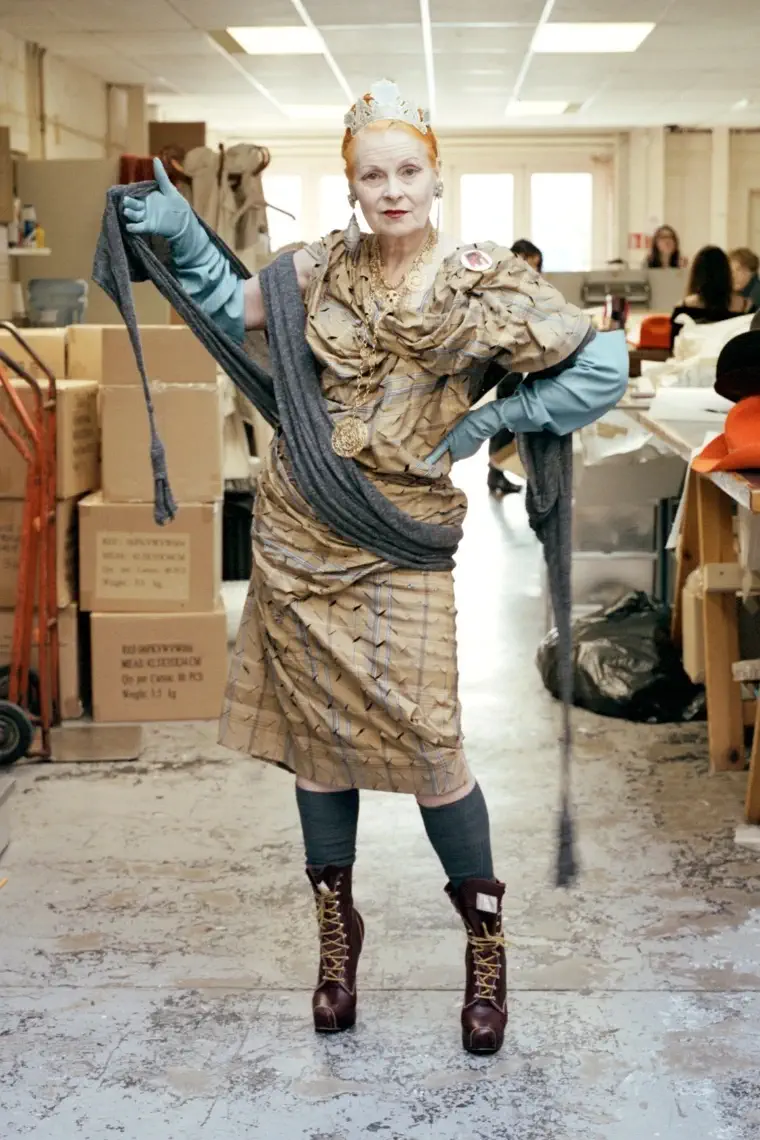
It is undeniable that the grande dame of British fashion not only revolutionized the way we dress time and time again but also never hesitated to take urgent action whenever she committed to an important cause of global significance. With her passing, the fashion industry has lost one of its most influential voices of the last century.
It is impossible to talk about the history of fashion without mentioning Vivienne Westwood. With a dazzling career that earned her immense respect in the industry and worldwide fame, the British designer has now become a legend with her death, just like the Japanese designer Issey Miyake.
Throughout decades of triumphs, Westwood achieved an impressive list of truly iconic moments in the fashion world (a phrase we do not use lightly, as this woman practically invented punk). Her journey earned her the title of Dame of the British Empire, but her strong marriage to Austrian designer Andreas Kronthaler, who is also the creative director of her brand, deserves a big applause for their successful personal and professional union.
When the world had to pause due to the coronavirus, the couple continued to unleash their creative spirit through activism and fashion. Vivienne Westwood, always ready to raise her voice for causes she believes in, inspired us with her Friday speeches, which she shared on her Climate Revolution website and social media platforms.
The Birth of Punk
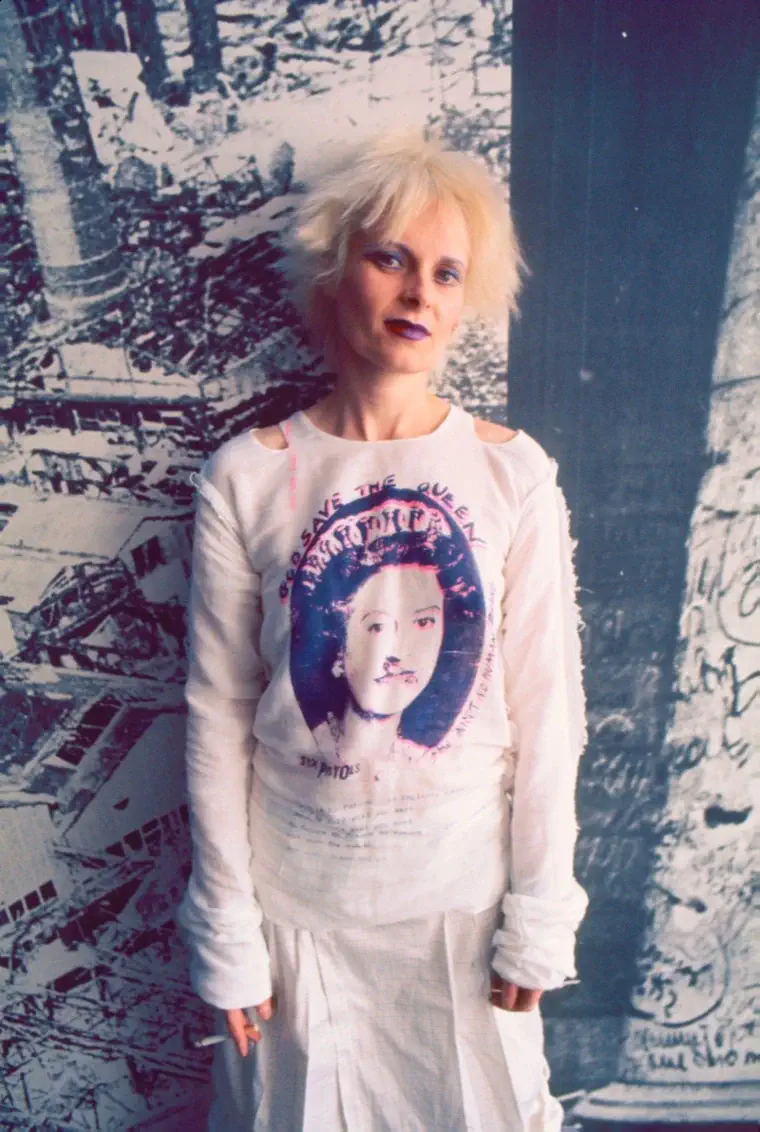
When Vivienne Westwood met Malcolm McLaren, the designer and manager of pioneering punk band Sex Pistols (with whom she also had a son), they opened a fashion boutique together in London’s Chelsea neighborhood in 1971. The store, located at 430 Kings Road, changed its name according to the collections presented by the designer, transitioning from Let It Rock to Too Fast To Live, Too Young To Die, and Sex in 1974.
In 1977, as Sex Pistols’ “God Save The Queen” reached number one on the NME chart, the store was renamed Seditionaries to reflect the emerging aesthetic and attitude that gave birth to a movement known as the punk era. It became the epicenter of an anti-fashion movement, dressing music groups like Sex Pistols and New York Dolls.
Historical Reminiscences
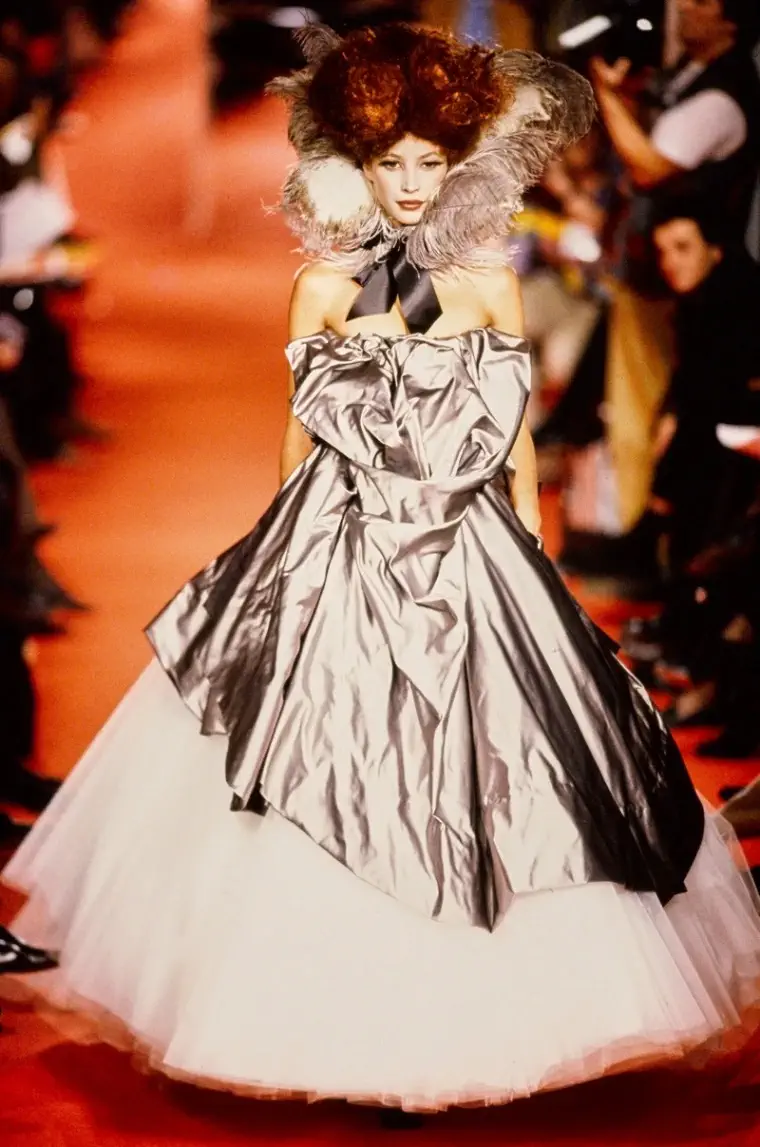
In the early 1980s, Vivienne Westwood left the London fashion scene to conquer the runways of Paris.
From provocative messages, safety pins, and bondage looks, she transitioned to a much more opulent fashion style: her beginnings as a runway designer. In 1981, Westwood and McLaren showcased their looks in their first London runway show, where their Pirates collection was widely acclaimed for liberating the silhouette from the restrictions of the 70s.
Although her collaboration with McLaren came to an end, she continued to dominate the fashion world with designs that marked a before and after in an industry not accustomed to such unconventional spirits.
She gave wings to a whole buccaneer aesthetic that bands like Bow Wow Wow embraced. “I thought: they [other designers] would go on vacation to Mexico and get ideas from there. I couldn’t do that. I was broke and had two children.
But I could look to the past in books, which ended up being romantic,” she wrote in her memoirs. “That’s when I started thinking about pirates. It was an idea of escaping the island, the little island I was trapped on, and delving into history.” After cashing in on the nihilism of ‘no future,’ this skillful designer continued to push boundaries and leave her mark on the fashion industry.Vivienne Westwood: The Revolutionary Fashion Icon
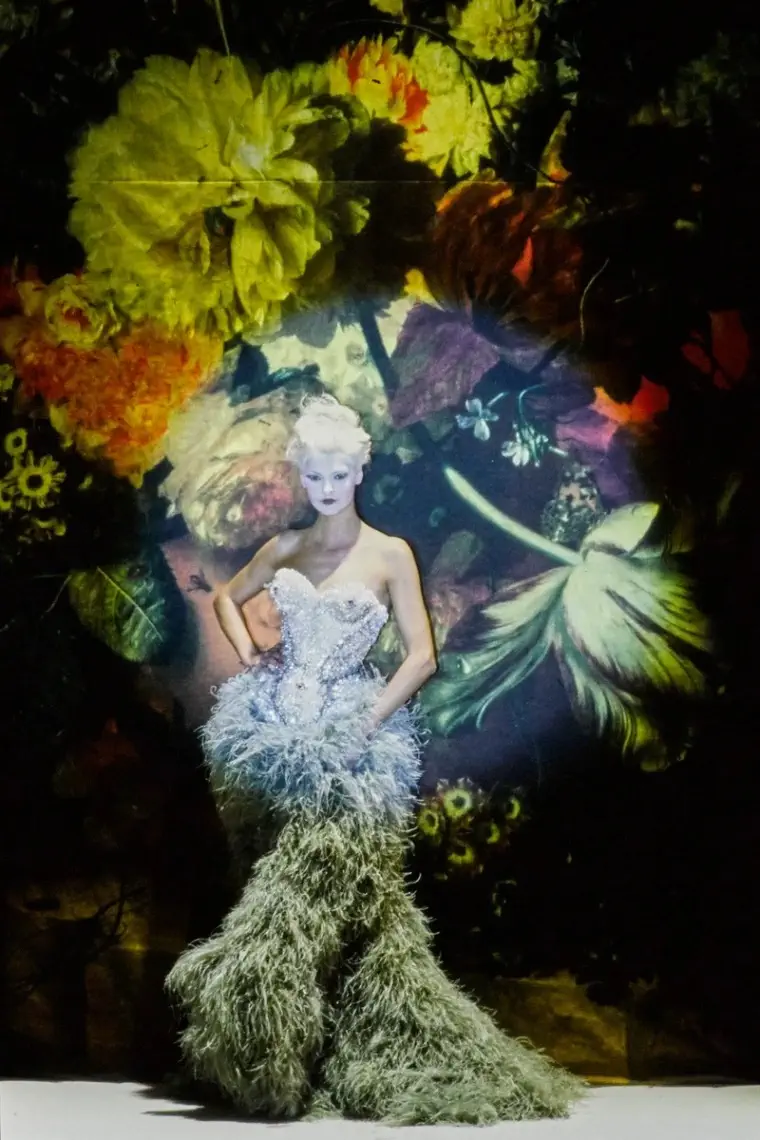
Vivienne Westwood, the epitome of a catalyst, once again capitalized on the spirit of rebellion that defined the New Romantics during an economic recession.
Her designs were a stark contrast to the rigid looks of the time. While exaggerated shoulder pads and power suits dominated the fashion scene, Westwood experimented with soft lines, earthy colors, and ethnic clothing. From Sauvages to Nostalgia of Mud (or Buffalo Girls), the designer combined her knowledge of historical garments with her interest in North and South American cultures, particularly the pleated skirts worn by Peruvian cholas.
“I am very anarchic and perverse with what I do with clothing, but what I seek is simplicity… The best thing about my garments, the way they make you feel great and strong, has to do with the sexy way they emphasize your body and make you aware of it,” she confessed in 1983 to Harpers & Queen magazine.
For someone whose career took off thanks to hours spent immersed in history books, this type of clothing became part of her essence. Westwood became known for incorporating echoes of historical dresses, especially from the Victorian era and romanticism. This led to her Mini-Crini collection for spring-summer 1985, where instead of succumbing to the masculine shoulder pads that were so popular in the 80s, she subverted the conservative attire of the 17th century and transformed it into sensual, fitted garments that accentuated curves. And, of course, who could forget her legendary ‘rocking horse’ shoes, presented in the same fashion show, reminiscent of the iconic Manolo Blahnik footwear.
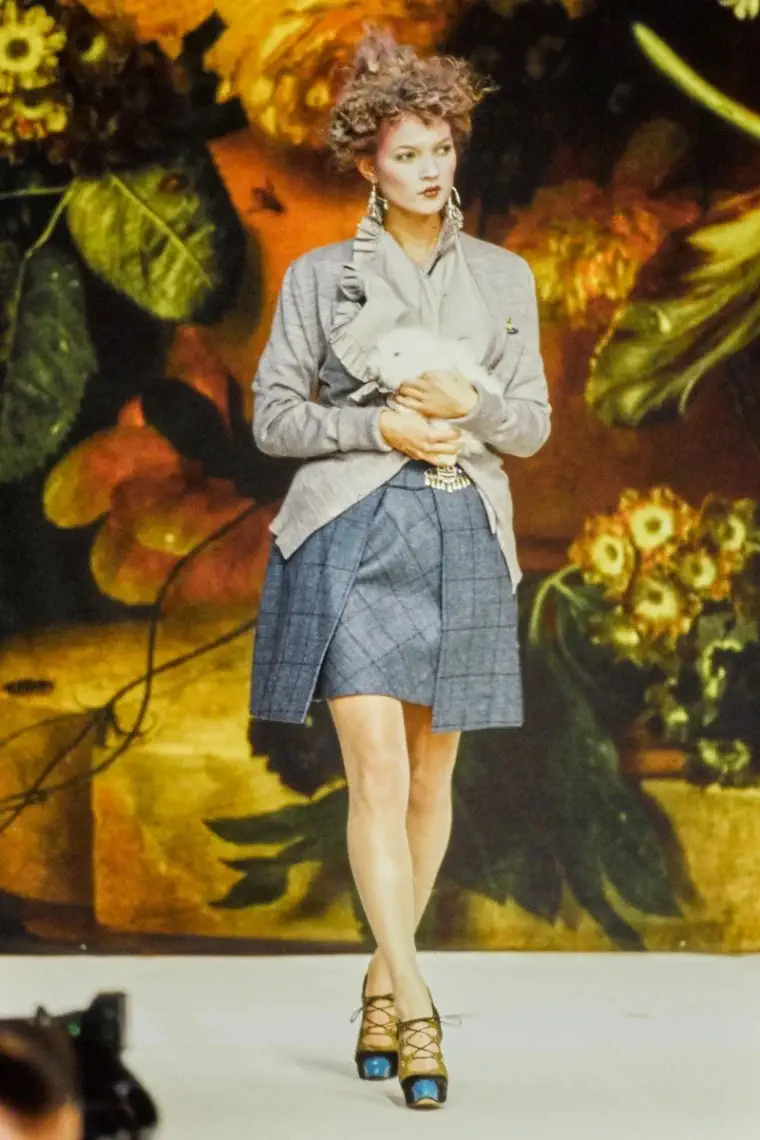
She also turned her British heritage into the DNA of her brand, but with an irreverent perspective, of course. It was the era of the pagan years and collections like Harris Tweed, where she parodied the upper classes. Five years later, she took various paintings from the London Wallace Collection and printed them on corsets. This was her Portrait collection, one of the most unforgettable and highly sought after by vintage treasure hunters.
The Anglomania phase marked her next stage, characterized by impeccable tailoring and a revision of classic English codes, such as the Union Jack or Scottish tartan. This coincided with the rise of supermodels. Who can forget Naomi Campbell’s fall on the runway, standing tall in Westwood’s platforms with a huge smile? Other designers tried (unsuccessfully) to replicate the anecdote, but the moment was forever captured in the visual archives of runway history.
In the late 80s, a significant change became evident as Westwood transitioned from defending punk codes to parodying the upper classes, a period she referred to as her ‘pagan years’. Her influential Harris Tweed collection for fall-winter 1987 was inspired by an image of a girl she saw on a train. “She couldn’t have been more than 14 years old. She had a little bun with braids, a Harris Tweed jacket, and a bag with ballet shoes inside. She looked so cool and composed, standing there,” she recounted in The Independent in 2011.
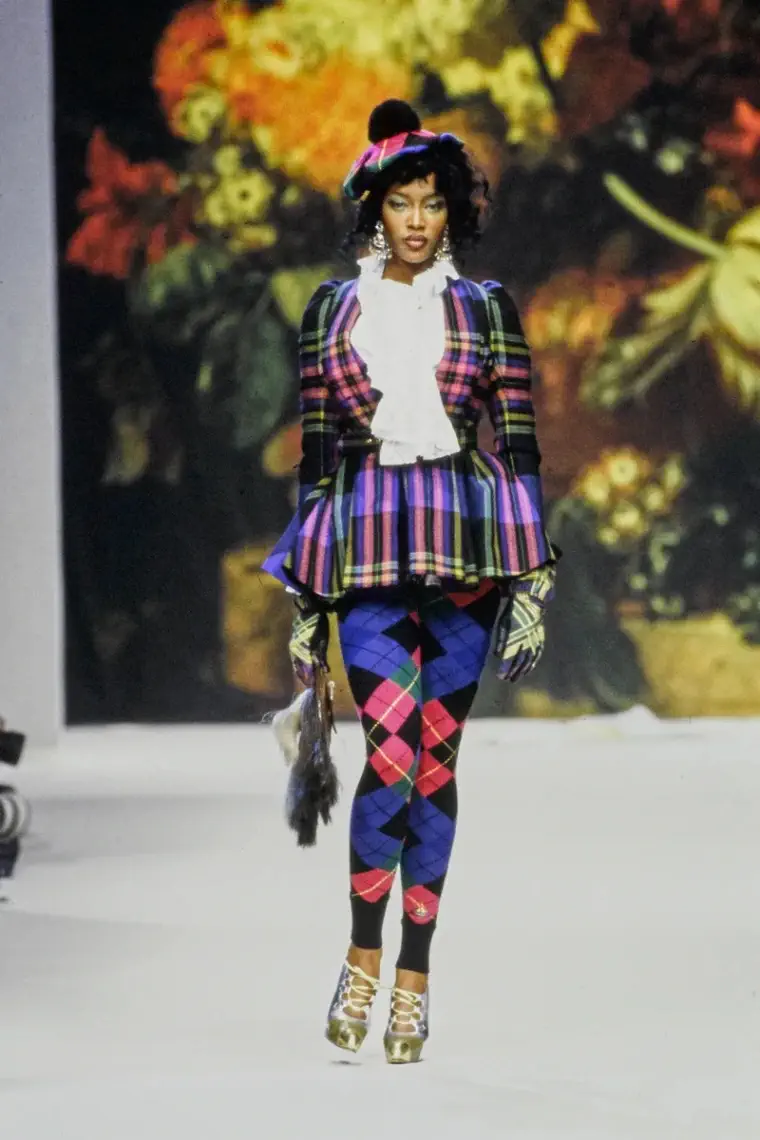
Vivienne Westwood was irreverent to the core, not only on the runway but also in her personal life. She posed as Margaret Thatcher on the cover of Tatler magazine in 1989, accompanied by the phrase “this woman was once punk.” A few years later, when she received the Order of the British Empire, she deliberately went to Buckingham Palace without underwear. “I wanted to show off my outfit by twirling my skirt. I didn’t realize that with photographers practically on their knees, the result would be more glamorous than I expected,” she later commented in The Guardian. “I heard that the Queen found the image amusing.”
The Era of Supermodels
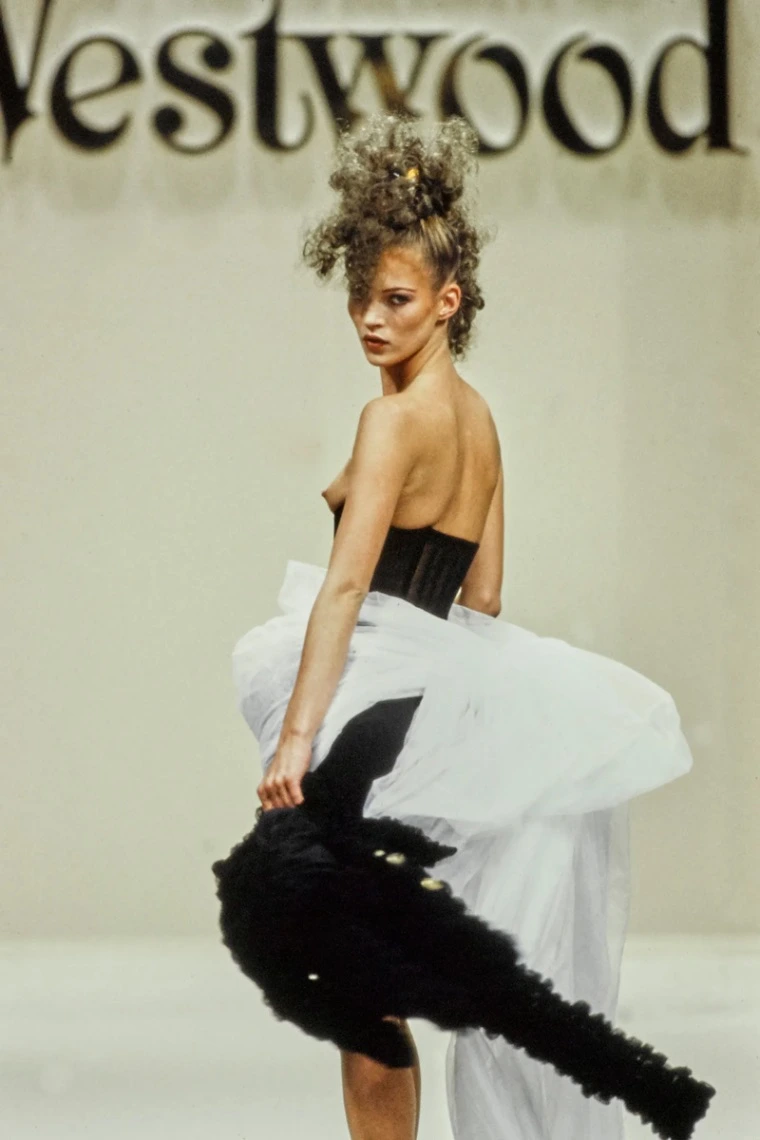
In the 90s, Westwood once again changed her aesthetic, merging historical references from both England and France while playing with contemporary proportions and impeccable tailoring. In 1993, the British designer married Austrian design student Andreas Kronthaler, and the couple successfully partnered both professionally and personally. Now, the designer will continue her legacy at the helm of the brand.


